How to Blind Bake a Pie Crust
What is Blind Baking?
Blind baking refers to partially baking or fully baking a crust before adding the filling. It is not about blind folding someone and playing some sort of culinary mashup game of “Pin the Tail on the Donkey.” That would be dangerous and probably not too tasty. Blind baking a crust will help prevent soggy bottoms and lead you onto your way to deliciousness. Once the crust is baked naked (sans filling), the filling is added and then finished baking or chilled, depending on the recipe’s need.
When blind baking a crust, you’ll line it and then weigh down the crust with pie weights, beans, dry rice, or something similar to help keep the bottom flat and the sides from sagging. As it bakes, the dough is going to want to puff and sag, and blind baking techniques are the culinary solution. After it bakes long enough to set, you can remove the stuff weighing it down, and then finish either par-baking it until it look dry-ish or finish baking a flakey golden brown, depending on your need.
When to Blind Bake A Crust?
There are 2 main types of recipes which benefit or need blind baking. When the filling is fairly liquidy (e.g. quiche, custard type pies like pumpkin pie). In this case you’ll partially blind bake the crust, usually until it loses its doughy look and the crust starts to lightly brown and appear drier. The other time you’ll blind bake is when the filling isn’t cooked at all, like for a Coconut Cream Pie or Chocolate Silk Pie. In this instance you’ll bake the crust completely, then usually fill and chill your delicious masterpiece.
Video: How to Blind Bake a Pie Crust
Tips on Blind Baking Pie Crust
Here’s a few tips for blind baking:
- Chill or freeze the dough before baking (at least 30 minutes, but we prefer an hour or so, especially if the kitchen is warm that day). Butter crusts in particular want to shrink, and the colder it is, the more it will solidify the butter in the dough and prevent or at least reduce shrinkage.
- Roll out and form the dough a little larger than what you want the final size to be. Even if you chill the dough, there will often still be some shrinkage, especially if you are using a homemade dough with a lot of butter (which is the tastiest, flakiest kind we love the most).
- We prefer to line our pie doughs with foil (preferably heavy duty foil). It can be molded into shape nicely and used as a bit of a crust guard to even out the cooking of the edges and bottom while they cook with the weights. However there are days when I am a little more fumbly and end up smushing the edges of the crust while lining it with the foil. For those days, a parchment circle or even a coffee filter are great alternatives.
- I love pie weights. It’s a one and done purchase. But if you don’t have any on hand, dry beans, rice, whole wheat berries, salt, sugar etc.. all work just fine. You’ll just need to toss them after (or keep them for your next blind bake), but they won’t cook right for recipes. Make sure to fill enough weights to go about 2/3 up the side.
How to Blind Bake a Pie Crust
Blind baking is a fairly simple process. This the technique we prefer.
- Roll out to a bit larger than your desired finished size. Place into the tart or pie pan, fitting it into the edges. Trim off excess dough (we’ll usually trim about 1/2” above the pan).
- Allow the dough to relax and chill in the fridge or freezer for at least 30 minutes (will help minimize shrinking when baking).
Blind bake the pie crust: Line the crust with aluminum foil with enough foil to completely cover the sides, and then fill with a layer of pie weights. King Arthur Flour has also shared a clever alternative technique (see their Technique #2 for when when you don’t really care what the top edges of the crust look like when finished – usually for when the filling is going to cover it completely).
Place pie crust on a baking sheet. Bake for 15 minutes, carefully remove the foil and weights. Poke the base a few times with a fork. If par-baking, then Bake for an additional 5-10 minutes, or until the the crust is lightly browned. If fully baking (e.g. for a chilled filling recipe), bake for another 20 minutes or until golden and cooked through.
This blind bake recipe was originally published in 2019. We love blind baking our crust when we make our Homemade Quiche Recipe Here.
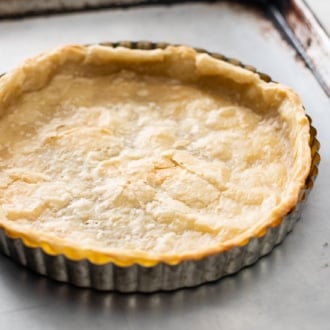
Blind Baked Pie Crust
This dough amount makes enough for two 9-inch pie doughs. Either for two bases or for one base and one top, either cut decorative pieces or for a double-crust top. If you want to add decorative cut pieces on top of a double-crust pie, you'll need to make extra dough. Makes Two 9-inch Pie Doughs.
Ingredients
- 2 1/2 cups (310g) all-purpose flour
- 2 sticks cold unsalted butter (225g or 1 cup), cut into 1/2-inch (12mm) pieces
- 2 teaspoons (10ml) sugar
- 1 teaspoon (5ml) kosher or sea salt
- 1/2 cup (120ml) cold water (you may not end up using the full amount)
Instructions
- In a bowl, pinch together the flour, butter, sugar, and salt with your fingertips until most of the big chunks of butter are flattened or broken up and there is no remaining dry flour sections.
- Incorporate the enough of the cold water into the flour until the mixture binds together and forms a rough ball. Knead the ball just until the dough begins to become roughly smoothish ball. Don't overwork the dough or else it will become tough.
- Divide the dough ball in half and then roll each half into a ball, and then flatten into a disk. Wrap in plastic wrap and chill for at least 30 minutes (can be chilled overnight or frozen for future use).
- Roll out to a bit larger than your desired finished size. Place into the tart or pie pan, fitting it into the edges. Trim off excess dough (we’ll usually trim about 1/2” above the pan).
- Allow the dough to relax and chill in the fridge or freezer for at least 30 minutes (will help minimize shrinking when baking).
- Blind bake the pie crust: Preheat oven to 375°F.
- Line the crust with aluminum foil with enough foil to completely cover the sides, and then fill with a layer of pie weights (or dried beans, salt, sugar, etc...) to fill about 2/3 up the crust sides.
- Place pie crust on a baking sheet. Bake for 15 minutes, carefully remove the foil and weights. Poke the base a few times with a fork.
- If par-baking, then bake for an additional 5-10 minutes, or until the the crust is lightly browned. If fully baking (e.g. for a chilled filling recipe), bake for another 20 minutes or until golden and fully cooked through.

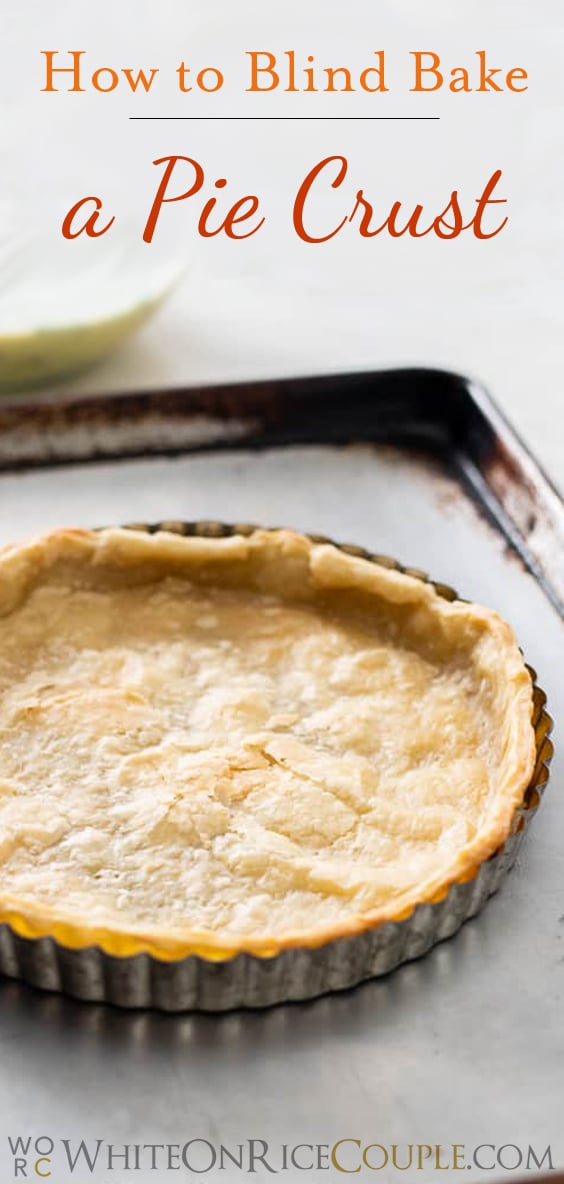
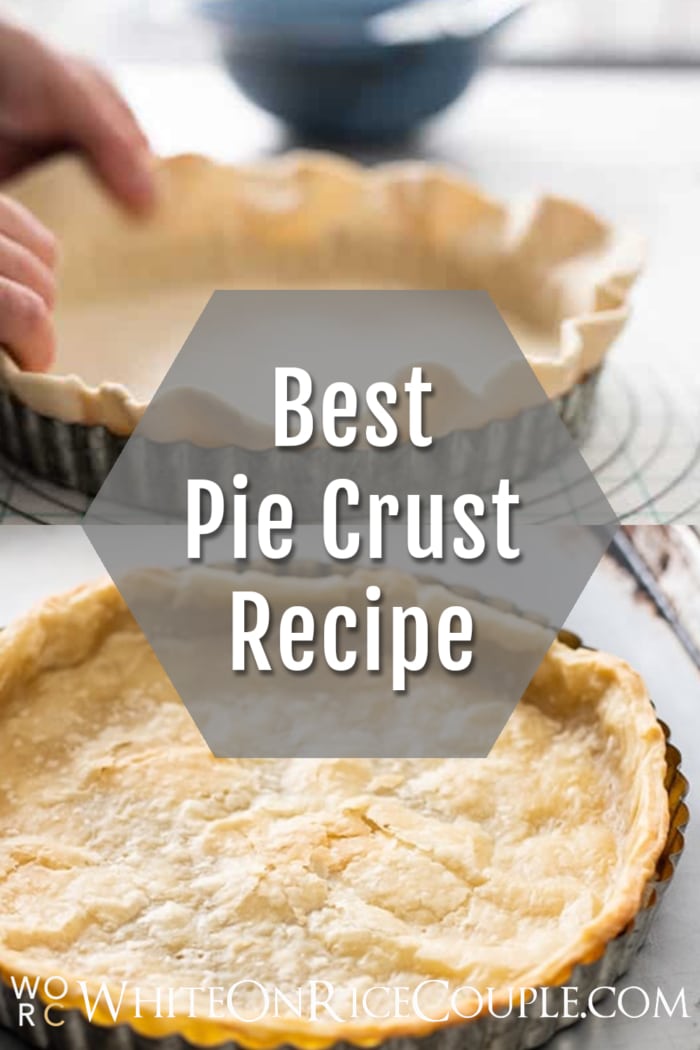

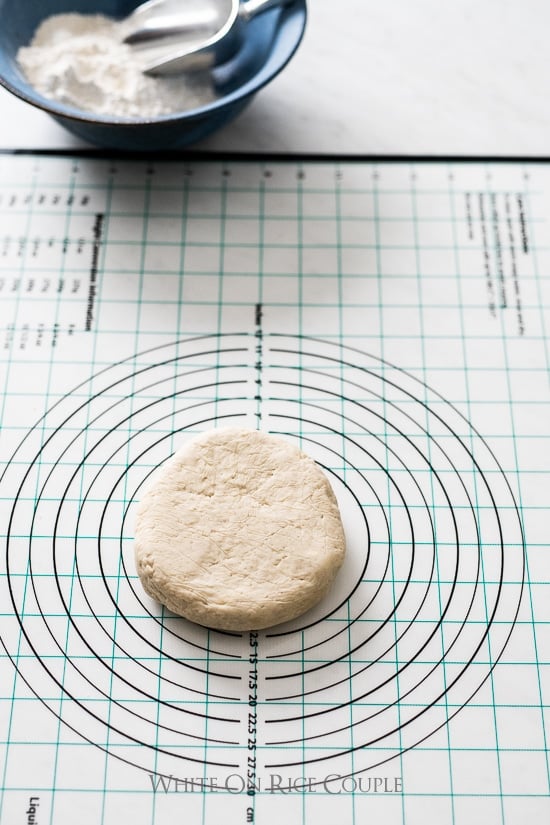
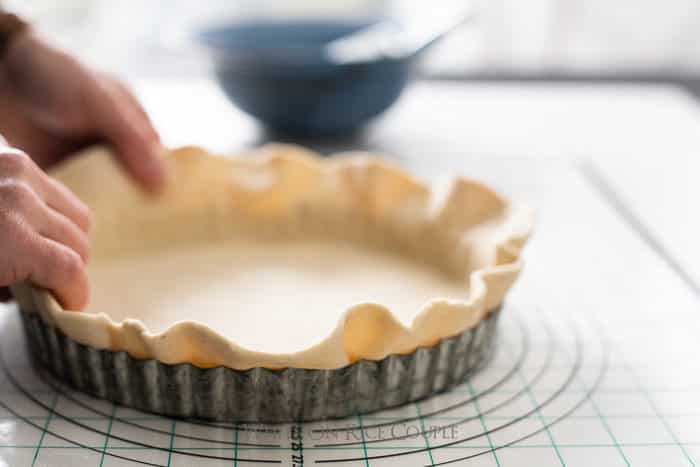
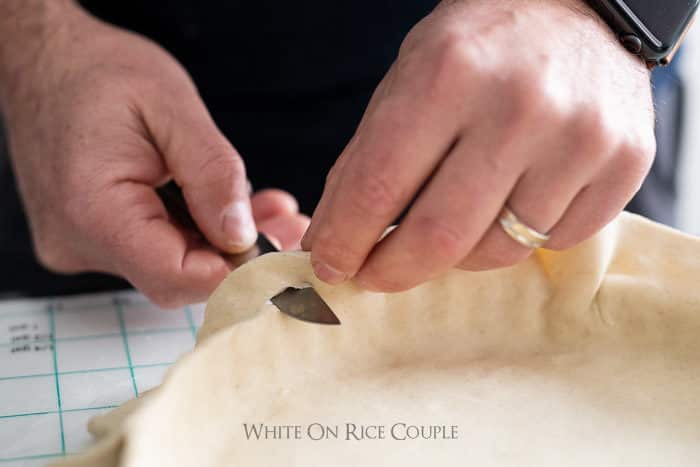
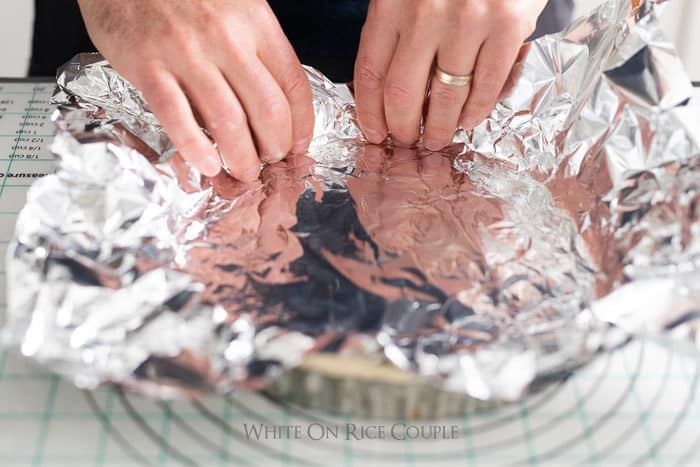
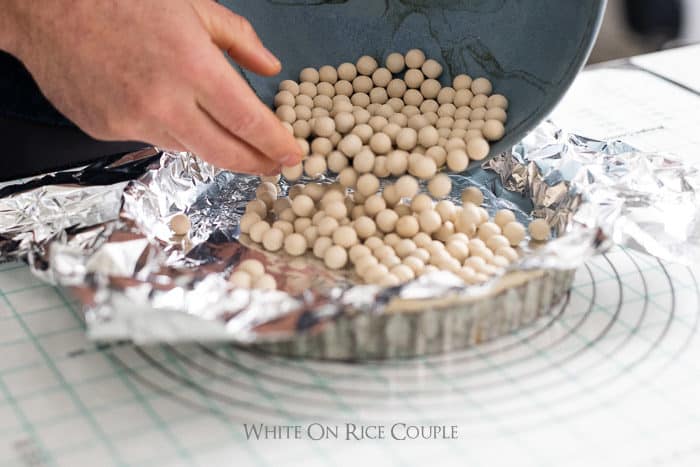
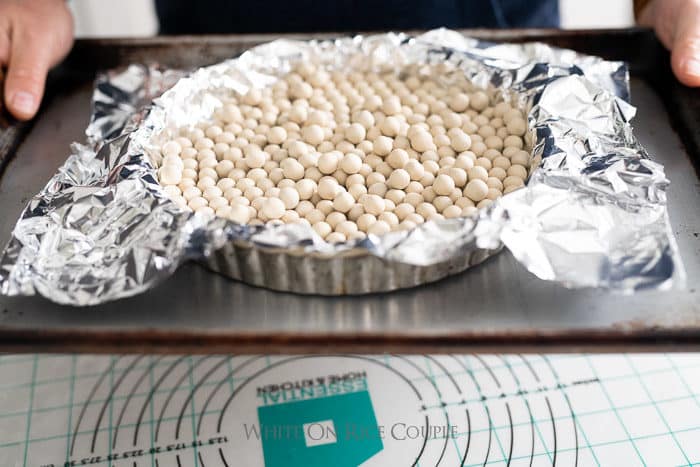
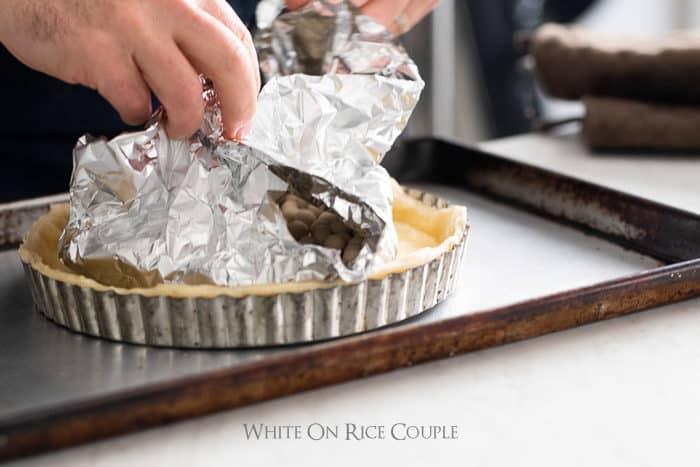
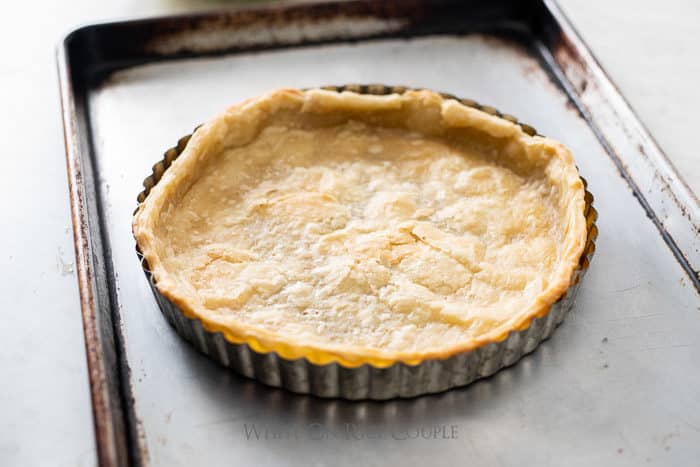
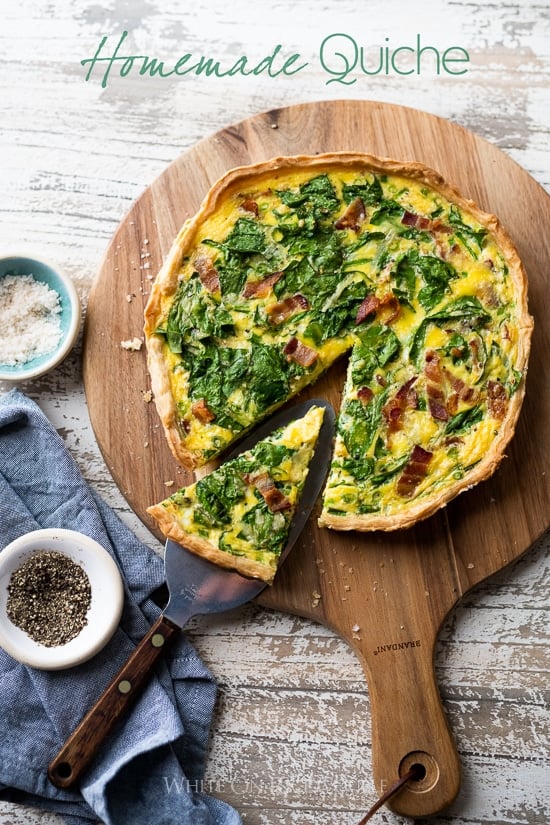
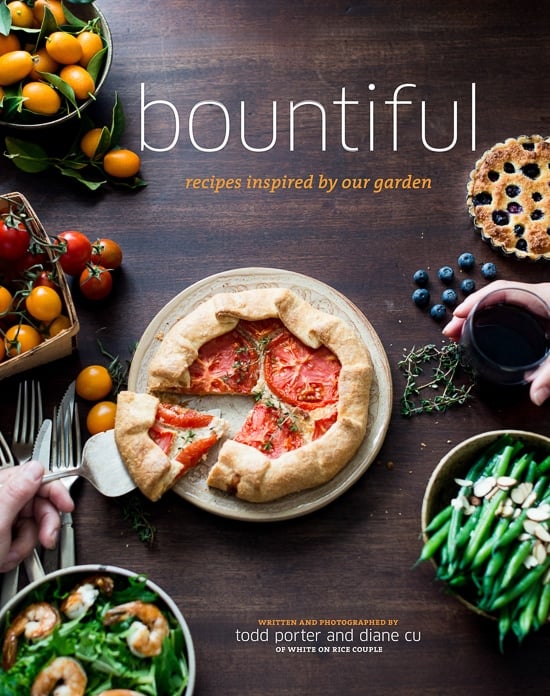
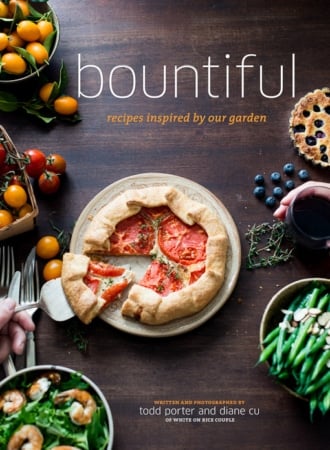


Tried this over the weekend and this is absolutely great. The crust is flaky and delicious.
These were really easy steps to follow. I’m a little new to baking and I wanted to try this trick when baking pies and it came out perfect. Thanks a bunch!
Question: why do you have to line the crust before adding pie weights? Can’t you just put the weights right on the crust? I’ve tried googling but can’t find an answer lol
I use this trick when I make your quiches. Comes out so perfect! Thanks!
Thanks for always introducing a lot of great cooking tips. This was really helpful when making pie!
I’m making it now. I’m assuming oven temp is at 350 degrees?
We prefer 375°F but 350 will work too. It will need a little more time at 350. – Sorry we missed that in the write up. It’s now updated.